The American speleologist and climbing instructor, who suffered a severe health episode causing him to become trapped in one of Turkey’s deepest caves, shared a video message to all of his supporters on the surface.
In the video, Mark Dickey, 40, said that he was “close to the edge” after he became sick and suffered from gastrointestinal bleeding during an expedition in the Morca cave in southern Turkey’s Taurus Mountains. He was stuck more than half a mile under the ground and was partially unconscious for several days before he was given life-saving medical treatment.
“I am doing well,” Dickey said in the video shared by Turkey’s communications directorate. “As you can see, I am up. I am alert, I am talking. I’m not healed on the inside yet so I am going to need a lot of help to get out of here.”
“The caving world is a really tight-knit group, and it’s amazing to see how many people have responded on the surface,” he said in the video.
AMERICAN CAVER MARK DICKEY TRAPPED 3,400 FEET INSIDE TURKISH CAVE, MASSIVE RESCUE EFFORT UNDERWAY
U.S. explorer Mark Dickey is seen next to a rescuer inside the Morca cave, near Anamur in Mersin province, southern Turkey Sept. 6, 2023 in this screen grab taken from a video. (AFAD, Turkey’s Disaster and Emergency Management Presidency/Handout via REUTERS )
Dickey also thanked the Turkish government and the international community for rallying to help him.
“The quick response of the Turkish government to get the medical supplies that I needed, in my opinion, saved my life. I was very close to the edge when Jessica [a fellow climber who is also his fiancé] got back to me. So, many thanks to the Turkish government and the Turkish cavers who are helping to support the international community here. I look forward to working with everyone to safely get myself out with their assistance.”
The message was recorded days ago and was carried to the surface, where Dickey hopes to return to in the coming days.
While his condition has stabilized, the rescue effort to get him out of the cave remains ongoing.
What is the Morca cave?
Carl Heitmeyer, a friend of Dickey’s and the public information officer for the New Jersey Initial Response team, of which the trapped American is a member, told Fox News Digital the Morca cave (pronounced “Morja”) is a “very technical, deep cave” that is notoriously dangerous.
He also said the Morca cave has “many parts” that are “very wet” and that it is “quite cold” at around 39 to 43 degrees Fahrenheit.
PREHISTORIC CAVE BELIEVED TO BE 10 MILLION YEARS OLD FOUND IN TEXAS
The cave’s entrance features a near sheer vertical drop before introducing a network of tunnels that weave back and forth, and becoming particularly narrow in some areas. The cave has a total depth of 4,000 feet.
“Mark is a very positive person who loves being in caves,” Heitmeyer said. “Despite the very serious nature of the situation I’m confident that his mental attitude is well above average.”
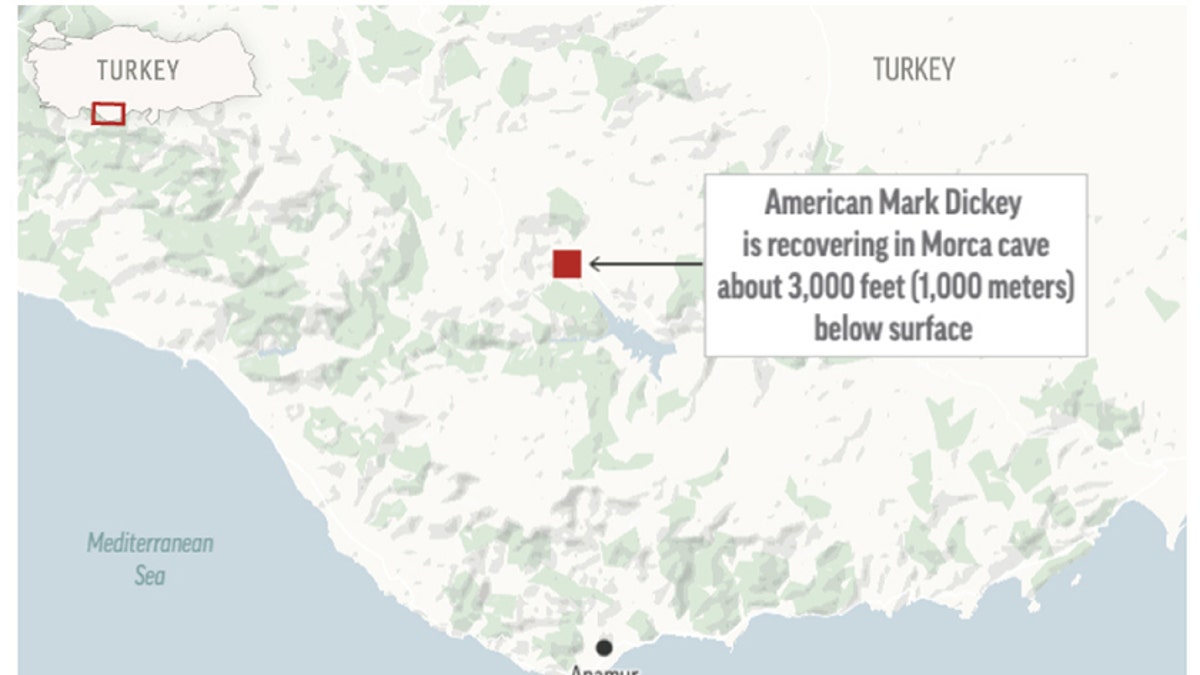
An American cave explorer mapping a Turkish cave became ill and is recovering thousands of feet below ground awaiting rescue. (AP Graphic)
Traversing these tunnels can take even an experienced climber several hours, he said, as they feature “tight passages that require belly crawling or squirming.”
“To go from the entrance to the second camp at -1,000 meters (~3,200 feet) takes an experienced caver who knows the cave well 7-8 hours; it can take up to 15 hours to get there for someone not familiar with the cave,” Heitmeyer explained.
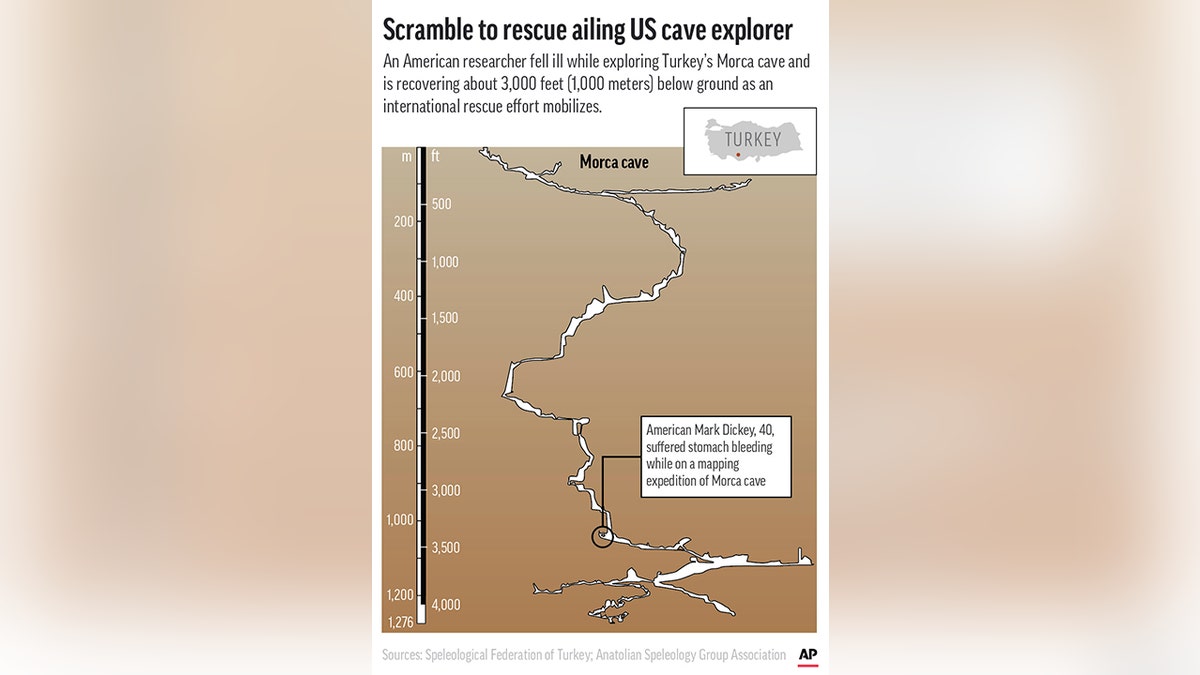
An American is recovering deep below ground and awaiting rescue after getting sick while on a mapping expedition of Turkey’s Morca cave. (AP Graphic)
Dickey suffered his health episode at a depth of approximately 3,400 feet, below the second camp in steep section of the cave that could take a “competent, healthy caver” several more hours to climb.
Heitmeyer told Fox News Digital to go from where Dickey is to the surface could take up to 20 hours. Should Dickey need to be carried out, the trip could take five times that about of time.
What makes cave rescues so dangerous?
Heitmeyer said several teams from various countries are assisting the trapped climber as he “lost a lot of blood, fluid and electrolytes.” While Dickey’s health is improving, he may ultimately need to be carried on a rescue litter.
“This rescue will require many rigging teams, passage modification teams (so the litter can fit through), and also round-the-clock medical care,” the friend told Fox News Digital.
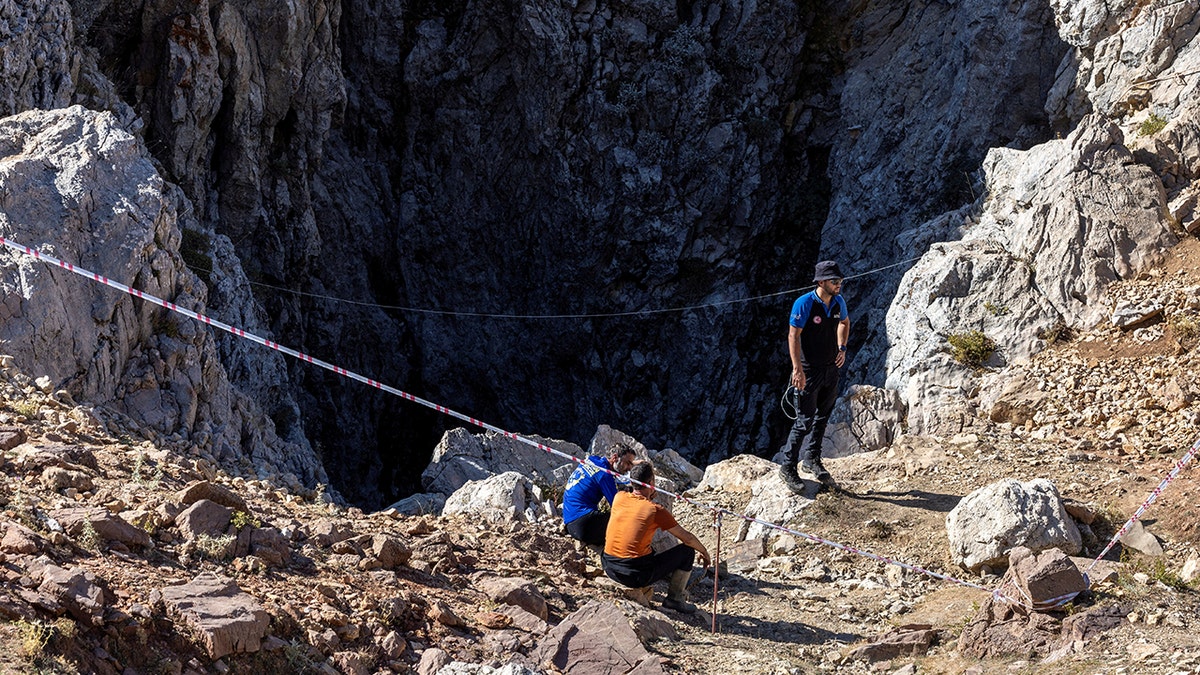
Turkish and Bulgarian rescuers stand at the entrance of Morca Cave as they take part in a rescue operation to reach U.S. caver Mark Dickey who fell ill and became trapped some 1,000 meters (3,280 feet) underground, near Anamur in Mersin province, southern Turkey Sept. 8, 2023. (REUTERS/Umit Bektas )
“Vertical passages that require complex ropework” can make the rescue more difficult, as well as the “extreme stamina needed” to ascend.
Difficulty communicating can also be a factor.
Heitmeyer continued, “They often take a long time. For this rescue, the rescuers will have to sleep in the cave.”

European Cave Rescue Association members work next to the entrance of Morca cave near Anamur, southern Turkey, Thursday, Sept. 7, 2023. (Huseyin Yildiz/IHA via AP)
The rescue effort will happen in stages, moving Dickey, as he is able, from one camp to another, over the course of days, Heitmeyer explained.
Who is aiding in the rescue?
Dickey has been unable to leave the cave on his own since Saturday, according to the European Cave Rescue Association, and a massive rescue effort remains underway.
Dickey was initially found and treated by the volunteer Hungarian Cave Rescue Service, which provided emergency blood transfusions to stabilize his condition.
The association said more than 150 Turkish and international cave rescue experts are leading the effort to save him, including rescue teams from Italy, Hungary, Croatia, Bulgaria and Poland.
The cave has been divided into several sections, with each country’s rescue team being responsible for one section.

The base camp of international rescuers is seen near the Morca cave as a rescue operation continues to reach U.S. caver Mark Dickey who fell ill and became trapped some 1,000 meters (3,280 feet) underground, near Anamur in Mersin province, southern Turkey Sept. 8, 2023. (REUTERS/Umit Bektas)
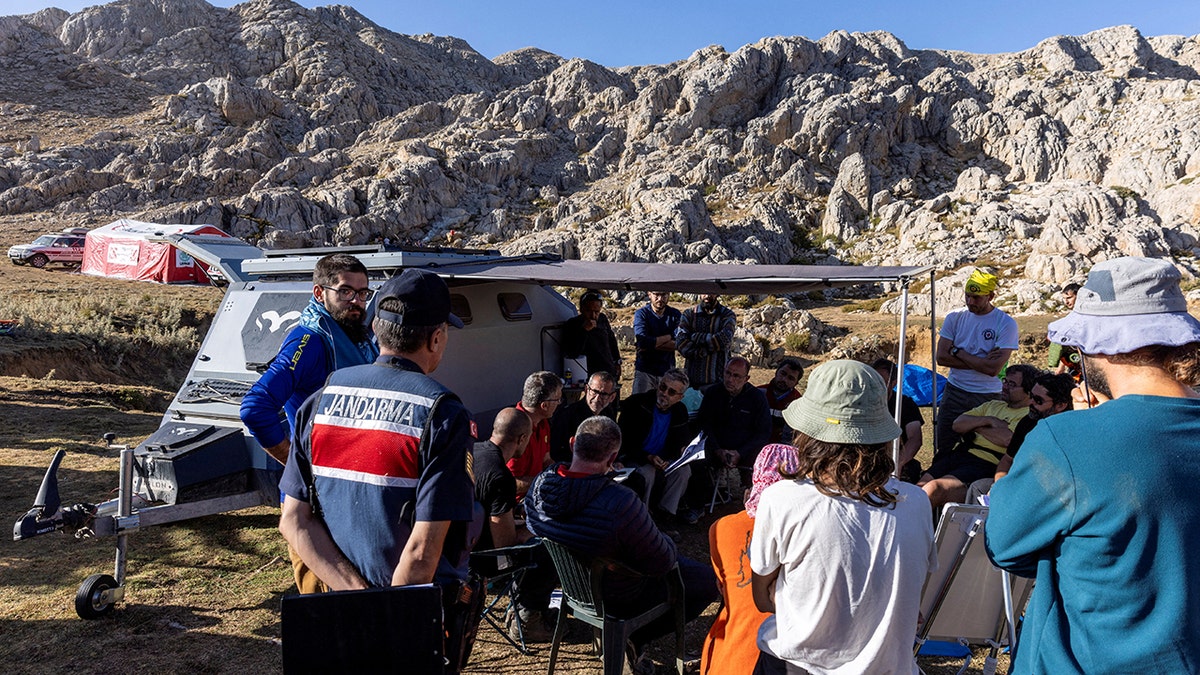
Rescuers hold a meeting near the Morca cave as a rescue operation continues to reach U.S. caver Mark Dickey who fell ill and became trapped some 1,000 meters (3,280 feet) underground, near Anamur in Mersin province, southern Turkey Sept. 8, 2023. (REUTERS/Umit Bektas)
Dickey, who is the secretary of the association’s medical committee, is described on its website as “a highly trained caver and a cave rescuer himself” who has participated in many international expeditions.
Heitmeyer also highlighted Dickey’s expertise in climbing, noting he “has been caving for over 20 years and is very experienced.”
He “has been an instructor for the National Cave Rescue Commission for 10 years, teaching a variety of cave rescue classes,” the public information officer said.

A rescuer holds a map of the Morca cave during a meeting as a rescue operation continues to reach U.S. caver Mark Dickey who fell ill and became trapped some 1,000 meters (3,280 feet) underground, near Anamur in Mersin province, southern Turkey Sept. 8, 2023. (REUTERS/Umit Bektas)
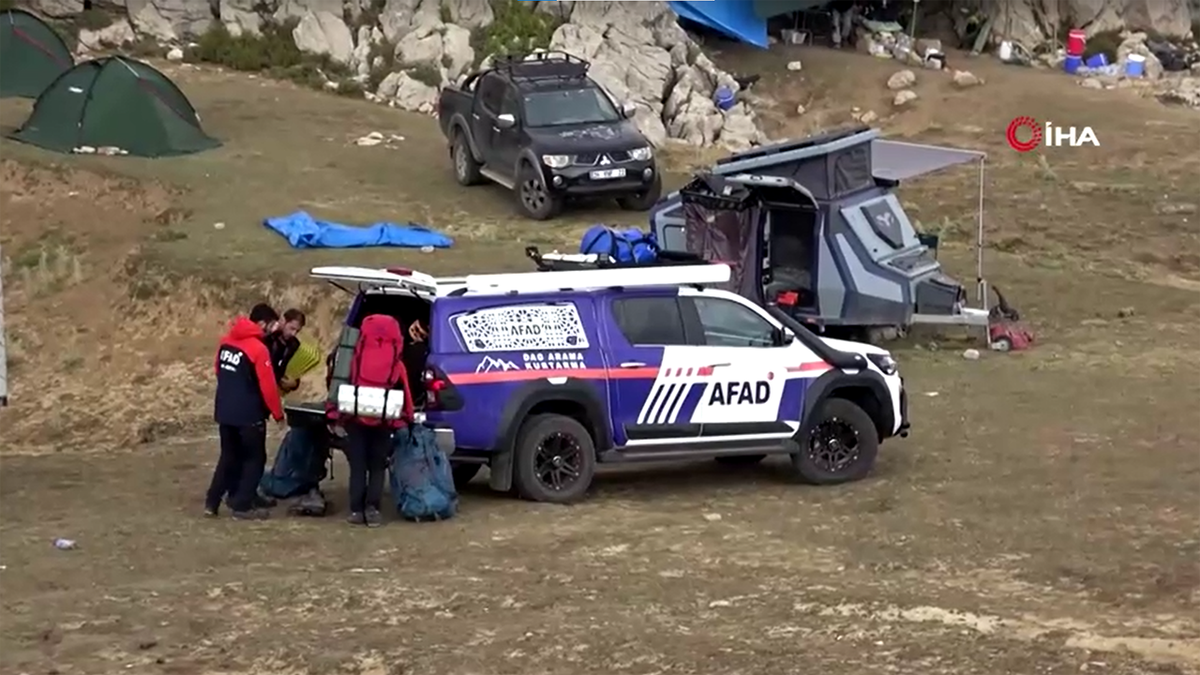
A team of medial personnel were able to find Mark Dickey, 40, inside the cave and gave him a blood transfusion to stabilize his condition. (Video from Turkey’s IHA news agency via Reuters)
Turkish disaster relief agency AFAD and rescue team UMKE are working with Turkish and international cavers on a plan to hoist Dickey out of the cave system should he be unable to exit on his own, the rescue association said.

Rescuers arrive at a base camp to take part in a rescue operation to reach U.S. caver Mark Dickey who fell ill and became trapped some 1,000 meters (3,280 feet) underground in Morca cave, near Anamur in Mersin province, southern Turkey Sept. 8, 2023. (REUTERS/Umit Bektas)
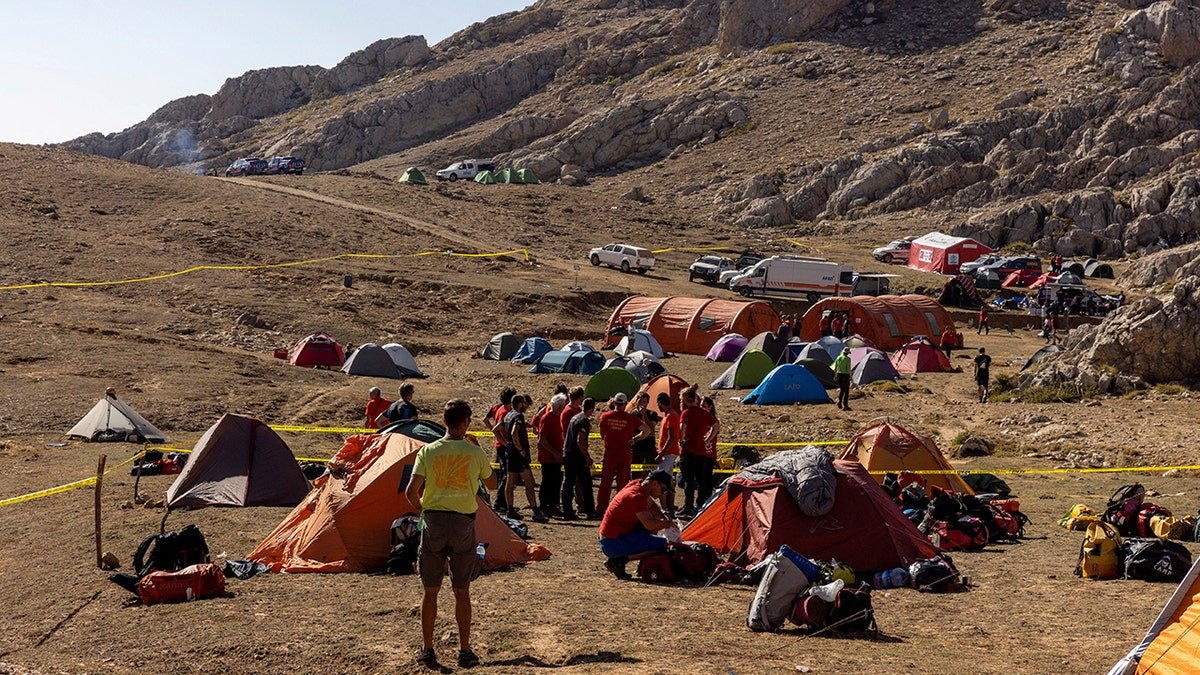
The base camp of international rescuers is seen near the Morca Cave as a rescue operation continues to reach U.S. caver Mark Dickey who fell ill and became trapped some 1,000 meters (3,280 feet) underground, near Anamur in Mersin province, southern Turkey Sept. 8, 2023. (REUTERS/Umit Bektas)
Marton Kovacs of the Hungarian Cave Rescue Service said the rescue plan includes needing to widen the cave’s narrow passages to accommodate a stretcher that could be used to hoist him to the surface.
What is coming next?
Kovacs said lifting Dickey will likely take several days, and that several bivouac points are being prepared along the way so the rescue personnel and Dickey can rest.
Heitmeyer told “Today” that he did not expect Dickey to be able to exit the cave for another four to eight days.
As of Friday morning, a fundraiser for his rescue has raised $50,000.
The Associated Press contributed to this report.